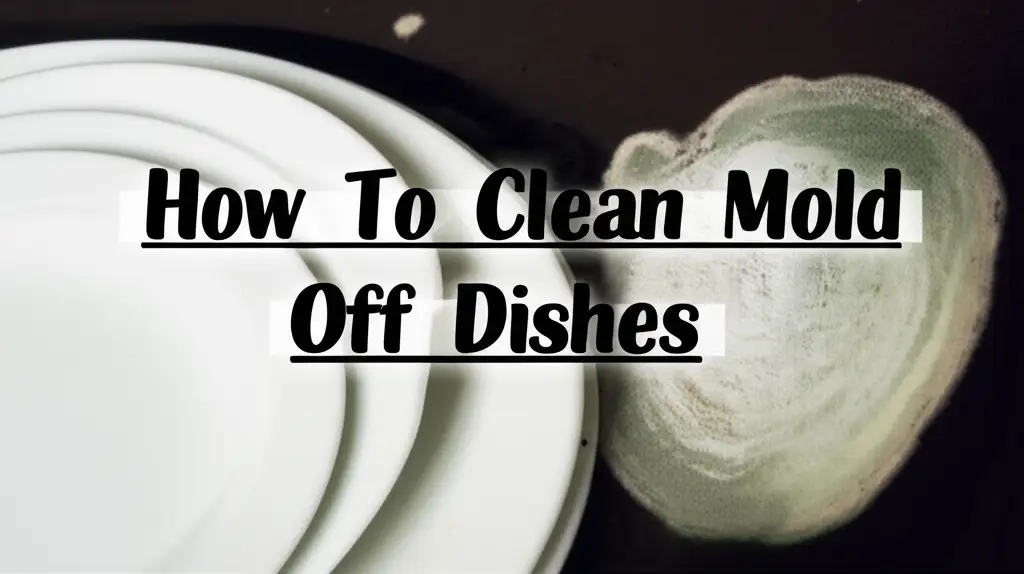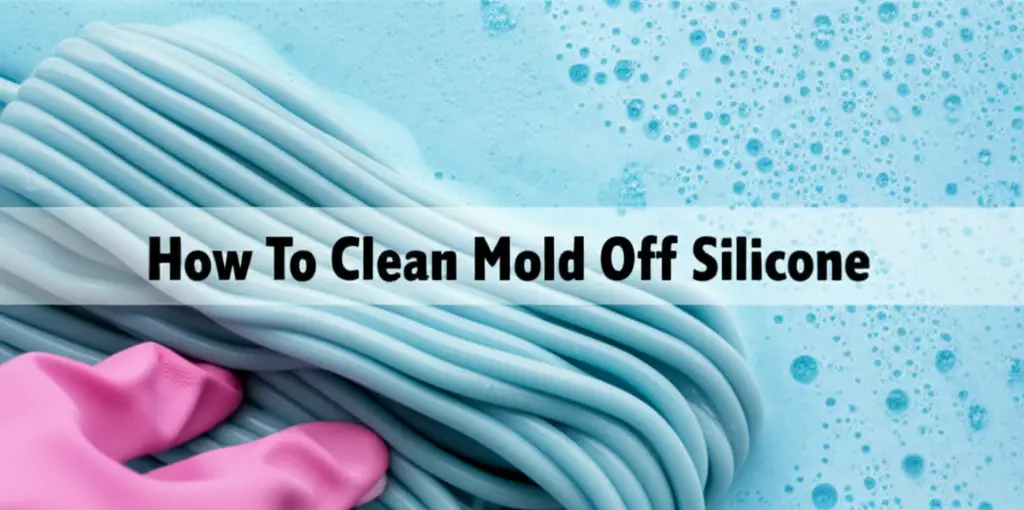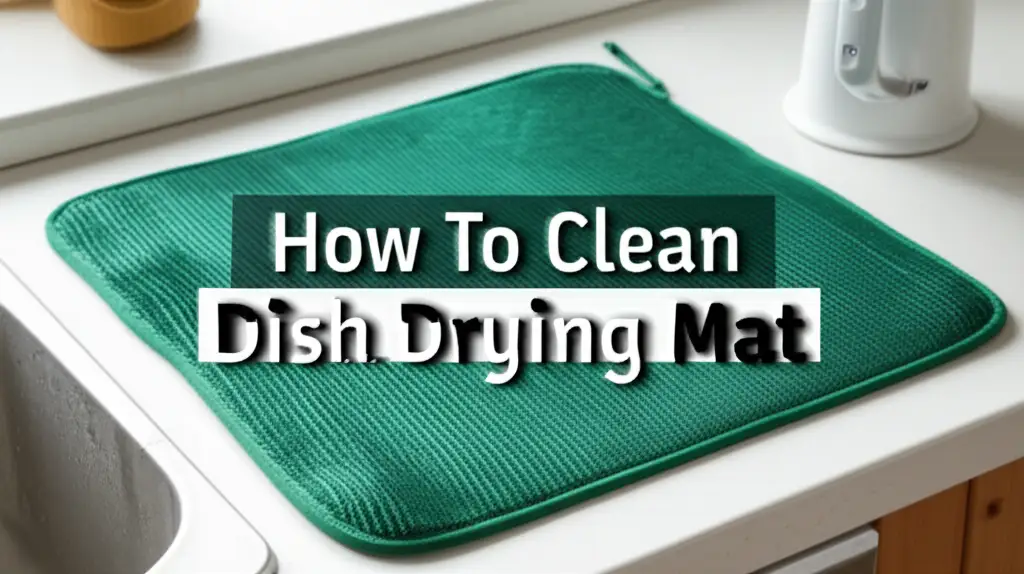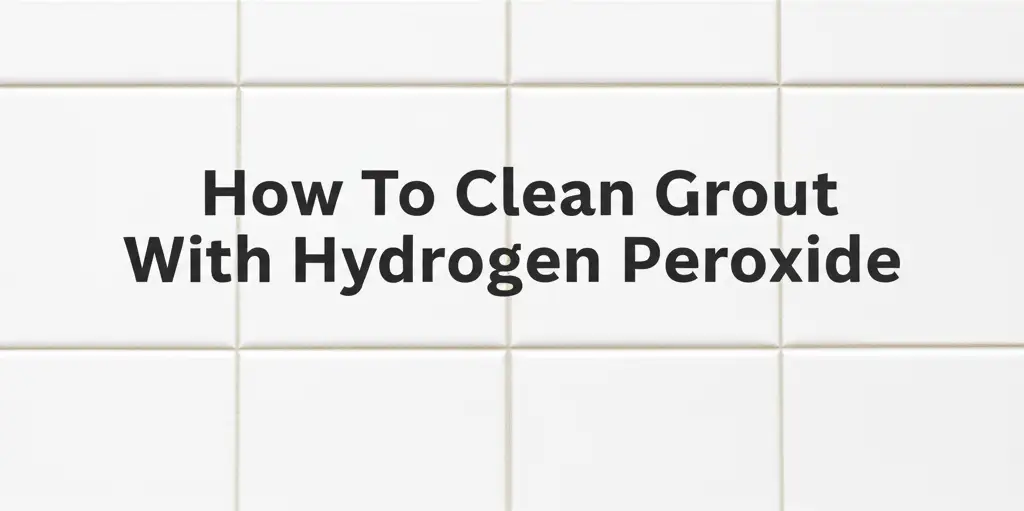· Home Cleaning · 15 min read
How To Clean Mold Off Dishes

How To Clean Mold Off Dishes: A Complete Guide
Opening your cupboard and finding mold on your dishes is unpleasant. This common issue poses a hygiene problem and can impact your health. Mold grows quickly in damp, dark places. Knowing how to properly clean mold off dishes is important. I will show you effective methods to remove mold and keep your dishes spotless.
This guide will cover identifying mold types and understanding health risks. We will look at essential safety steps before cleaning. You will learn about different cleaning agents like vinegar, bleach, and baking soda. I will provide a step-by-step cleaning process for various dish materials. Finally, we will discuss preventing mold growth and when to discard moldy items.
Takeaway
- Identify mold and understand its health risks before you start cleaning.
- Always wear gloves and ensure good ventilation for safety.
- Use hot, soapy water for initial cleaning.
- Disinfect dishes with white vinegar or a diluted bleach solution.
- Thoroughly dry all dishes before storing them to prevent mold return.
- Store dishes in dry, well-ventilated areas.
To clean mold off dishes, first discard any food remnants and rinse the dishes. Then, soak them in a solution of hot, soapy water. Scrub the mold away using a brush or sponge. For stubborn mold, disinfect with white vinegar or a diluted bleach solution, ensuring thorough rinsing afterward.
Understanding Mold on Dishes: Risks and Recognition
Finding mold on dishes can be alarming. Mold is a type of fungus that thrives in moist environments. It appears in various colors, including black, green, white, or even pink. Recognizing mold on your dishes is the first step toward safe cleaning.
Identifying different types of mold is not always easy. Often, mold on dishes looks fuzzy or slimy. Black spots or fuzzy white patches are common signs. Mold can grow on forgotten food, but it also colonizes the dish surface itself.
Identifying Different Types of Mold
Different mold types can appear on dishes. Black mold is a common concern, but other types like green or white mold are also prevalent. You might see fuzzy patches, slime, or discoloration. These visual cues tell you mold is present.
Even if you do not see visible mold, a musty smell can indicate its presence. Mold often hides in crevices or under stacked dishes. Inspect all surfaces, including rims and bottoms. Early detection helps prevent its spread.
Health Risks of Moldy Dishes
Using moldy dishes carries health risks. Mold produces spores, which can become airborne. Breathing these spores can cause respiratory problems. It might trigger allergies or asthma attacks. Some molds also produce toxins.
Eating from moldy dishes can lead to digestive issues. Symptoms include nausea, vomiting, or diarrhea. The severity depends on the mold type and the amount ingested. For your health, avoiding contact with moldy dishes is crucial. Always clean or discard them properly.
Essential Safety Precautions Before Cleaning Mold
Before you tackle moldy dishes, safety is important. Mold spores can spread during cleaning. This means protecting yourself and your kitchen. Taking precautions prevents health problems.
Proper preparation also helps to ensure a thorough cleaning. It makes the job safer and more efficient. I always recommend specific steps. These steps protect your skin and airways.
Personal Protective Equipment (PPE)
Wearing personal protective equipment is a must. I always put on rubber gloves first. This protects my skin from mold and cleaning solutions. Mold can irritate skin, and chemicals can be harsh.
I also recommend wearing an N95 respirator mask. This mask filters out mold spores. It stops you from breathing them in. Protect your eyes with safety goggles. This prevents spores or splashes from reaching your eyes.
Ensuring Proper Ventilation
Good ventilation is important when cleaning mold. Opening windows and doors creates airflow. This helps to carry mold spores outside. It also disperses strong odors from cleaning agents.
You can also use a fan to direct air out of the room. Poor ventilation traps spores indoors. This can worsen air quality. It also increases your exposure to mold. Ensure your cleaning area is well-ventilated before you begin.
Effective Methods to Clean Mold Off Dishes
Once you are ready, several methods effectively remove mold. The best method depends on the dish material and mold severity. You can use common household products. These products are often available in your home. I have found different approaches work for different situations.
Combining methods sometimes yields the best results. Always test a small, inconspicuous area first. This checks for any adverse reactions on the dish surface. Safety is important when choosing your cleaning agent.
Using Hot Soapy Water and Scrubbing
For light mold growth, hot, soapy water is your first line of defense. Fill a sink or basin with very hot water. Add a generous amount of dish soap. Submerge the moldy dishes completely in the soapy water.
Let the dishes soak for at least 15-30 minutes. This helps loosen the mold and food debris. Use a stiff-bristled brush or a scrubber to scrub off the mold. Pay attention to all crevices and edges. Rinse thoroughly under hot running water. Make sure no soap residue remains. This initial scrub removes much of the visible mold.
Disinfecting with White Vinegar
White vinegar is a powerful natural disinfectant. It is effective against many mold species. Vinegar is safe for most dish materials, unlike bleach. This makes it a great choice for a first disinfectant.
To use vinegar, mix equal parts white vinegar and water in a spray bottle. Spray the solution generously onto the moldy areas. Let it sit for at least an hour. For heavy mold, you can soak dishes in pure white vinegar for several hours. After soaking, scrub the dishes again. Then, rinse them thoroughly with hot water. The vinegar smell will dissipate as the dishes dry. For more information on using vinegar for mold, you can read our guide on how to clean mold with vinegar.
Applying Bleach for Stubborn Mold
Bleach is very effective for killing stubborn mold and sanitizing non-porous dishes. Use bleach with caution. It can discolor certain materials. Never mix bleach with vinegar or other cleaners. This creates toxic fumes.
To use bleach, dilute one tablespoon of bleach in one gallon of water. Submerge non-porous dishes like ceramic, glass, or stainless steel in this solution. Let them soak for 10-15 minutes. After soaking, scrub thoroughly with a brush. Rinse the dishes multiple times under running water. Ensure all bleach residue is gone. For a broader understanding of using bleach for mold, check out our article on how to clean mold with bleach.
Natural Solutions: Baking Soda and Lemon Juice
Baking soda and lemon juice offer milder, natural alternatives. Baking soda is abrasive and helps scrub away mold. It also absorbs odors. Lemon juice provides natural acidity and a fresh scent.
To use baking soda, make a paste with baking soda and a small amount of water. Apply the paste to moldy areas. Let it sit for 15-20 minutes. Scrub with a brush, then rinse well. For extra cleaning power, you can sprinkle baking soda on mold. Then, spray it with lemon juice. The fizzing action helps lift mold. Scrub and rinse. These methods are good for lighter mold problems.
Step-by-Step Guide for Deep Cleaning Moldy Dishes
Deep cleaning moldy dishes requires careful steps. This ensures all mold is gone and the dishes are safe. The process varies slightly depending on the dish material. I follow a structured approach to make sure no mold remains. It helps me tackle even tough mold growth.
Remember, thoroughness is key here. Do not rush any step. Proper cleaning prevents mold from returning quickly. Always prioritize your safety during this process.
Preparing the Work Area
Start by preparing a safe and clean work area. Clear your sink and countertops. Lay down old towels or newspapers to catch spills. This protects your surfaces from mold spores and cleaning solutions. Ensure the area is well-ventilated, as discussed earlier. Open windows and turn on exhaust fans.
Gather all your cleaning supplies before you start. This includes gloves, a mask, a scrub brush, and your chosen cleaning agent. Having everything ready makes the cleaning process smoother. It also helps you stay focused on the task.
Initial Rinse and Scrape
Before applying any cleaners, remove loose mold and food debris. Take the moldy dishes to the sink. Scrape off any large pieces of mold or stuck-on food into a trash can. Avoid shaking or hitting the dishes. This prevents spreading mold spores into the air.
Rinse the dishes under hot running water. This helps wash away any remaining loose mold particles. Be careful not to splash water around too much. The goal is to contain the mold as much as possible. This initial step makes the main cleaning more effective.
Applying the Chosen Cleaning Solution
Now apply your chosen cleaning solution. If using hot soapy water, fill the sink and let dishes soak. For vinegar, spray or soak the dishes. If you use bleach, prepare the diluted solution in a separate basin.
Ensure the solution covers all moldy areas. For hard-to-reach spots, use a small brush or a cotton swab. Let the solution sit for the recommended time. This allows the cleaning agent to penetrate and kill the mold. Patience during this step improves results.
Thorough Scrubbing and Rinsing
After the solution has sat, it is time to scrub. Use a stiff brush or a non-abrasive scrubber. Scrub all surfaces of the dishes. Pay special attention to edges, seams, and any textured areas. Mold often clings to these spots. Apply firm, consistent pressure.
Once you have scrubbed away all visible mold, rinse the dishes completely. Use very hot running water. Rinse until no residue remains and the water runs clear. You can feel the surface to ensure it is clean and smooth. Rinse thoroughly multiple times if using bleach.
Disinfecting Plastic Dishes
Plastic dishes can harbor mold more easily than ceramic or glass. Their porous nature allows mold to penetrate. For cleaning mold off plastic dishes, a vinegar solution is often best. Bleach can sometimes damage or stain plastic over time.
Soak plastic dishes in a 50/50 white vinegar and water solution for several hours. For stubborn mold, you can even soak them overnight. Then, scrub vigorously. Rinse completely. For more detailed advice, you can refer to our guide on how to clean mold off plastic.
Final Drying and Inspection
Drying dishes thoroughly is very important. Mold thrives in moisture. After rinsing, air-dry the dishes completely on a drying rack. You can also dry them with a clean, dry towel. Make sure every part of the dish is dry. This includes bottoms and stacking rings.
Once dry, inspect each dish closely. Look for any remaining mold spots or musty smells. If you find any, repeat the cleaning process. Only store dishes once they are perfectly dry and mold-free. Proper drying is crucial for preventing mold return.
Preventing Mold Growth on Dishes: Best Practices
Preventing mold is easier than cleaning it. Good habits in the kitchen stop mold from starting. A clean and dry environment is mold’s enemy. I always focus on these key practices. These simple steps keep your dishes clean and safe.
Consistency is important for prevention. Make these practices part of your daily routine. This will save you time and effort in the long run. It also keeps your kitchen healthier.
Proper Washing and Drying Techniques
Always wash dishes soon after use. Do not let food sit on them for long. Food residue is mold’s favorite meal. Use hot water and plenty of soap. This removes food particles and grease effectively.
After washing, dry dishes completely. Air-drying on a rack is good. You can also use a clean, dry towel. Do not stack wet dishes. This traps moisture. Moisture is what mold needs to grow. Ensure dishes are bone dry before putting them away.
Smart Storage Solutions
Storing dishes correctly prevents mold. Store them in a dry cabinet or drawer. Ensure good air circulation. Avoid overcrowded cupboards. Air needs to move around the dishes. This prevents moisture buildup.
Consider using shelf liners if your cabinets are prone to dampness. These can help absorb excess moisture. Keep the cabinet doors ajar slightly after washing dishes. This allows trapped humidity to escape. Clean your dish storage areas regularly. This helps maintain a mold-free environment.
Maintaining Kitchen Hygiene
General kitchen hygiene is crucial for mold prevention. Clean your sink regularly. Food particles and water can collect there. Wipe down countertops and backsplashes daily. These surfaces can harbor mold spores.
Empty your trash can often. Food waste creates a breeding ground for mold. Check under your sink for any leaks. Even small drips can cause mold. A clean kitchen supports clean dishes. Consider cleaning your dishwasher regularly too, as mold can grow there. Our guide on how to clean mold in dishwasher offers helpful tips. Regularly cleaning other kitchen items like your coffee maker also prevents mold. Read about how to clean mold out of coffee maker for more insights.
When to Discard Moldy Dishes
Sometimes, cleaning mold off dishes is not enough. Knowing when to discard moldy items is important for safety. Not all dishes can be salvaged. Porous materials are especially tricky. I consider this a last resort, but a necessary one for health.
It is better to be safe than sorry. Health risks from mold can be serious. If you have any doubt, throwing out the item is the best choice. This protects you and your family.
Porous vs. Non-Porous Materials
The material of the dish determines if it can be safely cleaned. Non-porous materials like glass, ceramic, glazed pottery, and stainless steel are generally safe to clean. Their smooth surfaces make it hard for mold roots to penetrate deeply. You can usually remove mold completely from these items.
Porous materials are different. Items like unglazed pottery, wood, or cracked dishes absorb moisture. Mold roots can grow deep into these materials. It becomes almost impossible to remove all mold. Even if the surface looks clean, spores can remain. This means mold can regrow quickly.
When to Throw Away a Dish
Discard a dish if it is made of a porous material and has significant mold growth. This includes wooden cutting boards or unglazed ceramic items. If a non-porous dish has deep cracks or chips, throw it away. Mold can hide and thrive in these damaged areas. It is difficult to clean these spots thoroughly.
Also, discard dishes if the mold growth is extensive. If you cannot remove all mold after multiple cleaning attempts, it is time to part with the item. If the dish has a persistent musty smell even after cleaning, this indicates mold is still present. Your health is not worth the risk of keeping a questionable dish.
FAQ Section
Can mold on dishes make you sick?
Yes, mold on dishes can make you sick. Mold spores can cause allergic reactions, respiratory problems, or asthma attacks if inhaled. Some molds produce toxins that can lead to digestive issues like nausea or vomiting if ingested. It is important to avoid using moldy dishes for food. Always clean them thoroughly or discard them for your health and safety.
Is it safe to wash moldy dishes in a dishwasher?
Washing moldy dishes in a dishwasher alone is generally not enough to kill all mold. Dishwashers use hot water and detergent, which can remove visible mold. However, for complete disinfection, pre-treatment with vinegar or a bleach solution is recommended. Mold spores can also spread to other dishes or the dishwasher itself. Always pre-clean and then run a hot cycle.
How long does it take for mold to grow on dishes?
Mold can start growing on dishes within 24 to 48 hours under ideal conditions. These conditions include moisture, food residue, and warmth. Forgetting a wet dish or leaving food on a plate in a warm environment provides a perfect breeding ground. Preventing mold requires immediate washing and proper drying of dishes after use.
What is the best product to kill mold on dishes?
For non-porous dishes, a diluted bleach solution (1 tablespoon of bleach per gallon of water) is very effective for killing mold and sanitizing. White vinegar (undiluted or 50/50 with water) is a great natural alternative, safe for most materials, and effective against many mold types. For light mold, hot soapy water and scrubbing can work.
When should I throw away a moldy dish?
You should throw away moldy dishes if they are made of porous materials like wood or unglazed ceramics. Mold roots penetrate these materials, making complete removal impossible. Also, discard any dish with deep cracks or chips, as mold can hide in these damaged areas. If a non-porous dish has a persistent musty smell after cleaning, it is best to discard it.
Can I use hydrogen peroxide to clean mold off dishes?
Yes, hydrogen peroxide can clean mold off dishes. It is a milder alternative to bleach. Use a 3% hydrogen peroxide solution. Spray it directly onto the moldy areas. Let it sit for 10-15 minutes to penetrate the mold. Then, scrub the dishes thoroughly and rinse them well with hot water. Hydrogen peroxide is generally safe for most dish materials.
Conclusion
Finding mold on your dishes is a common problem. However, you now have the knowledge to tackle it effectively. Cleaning mold off dishes protects your health. It also keeps your kitchen hygienic. Remember to prioritize safety with protective gear and good ventilation. Hot soapy water, vinegar, and bleach are powerful tools for mold removal.
Always dry dishes completely and store them properly. This prevents mold from returning. By following these steps, your dishes will stay clean and mold-free. Keep your kitchen a clean and safe place. For more cleaning tips and guides, visit BeACleaner.com. I am always here to help you maintain a spotless home.




